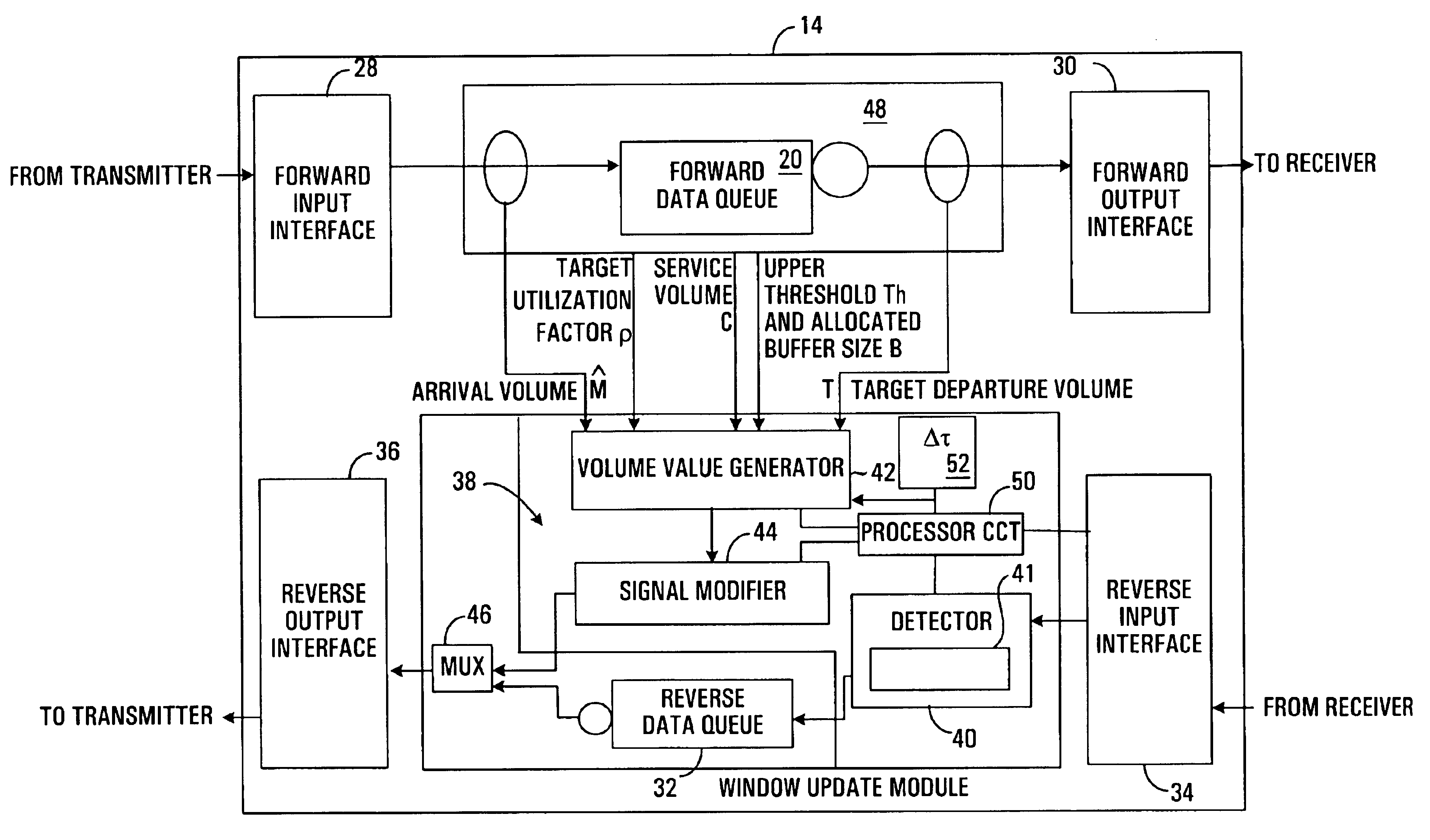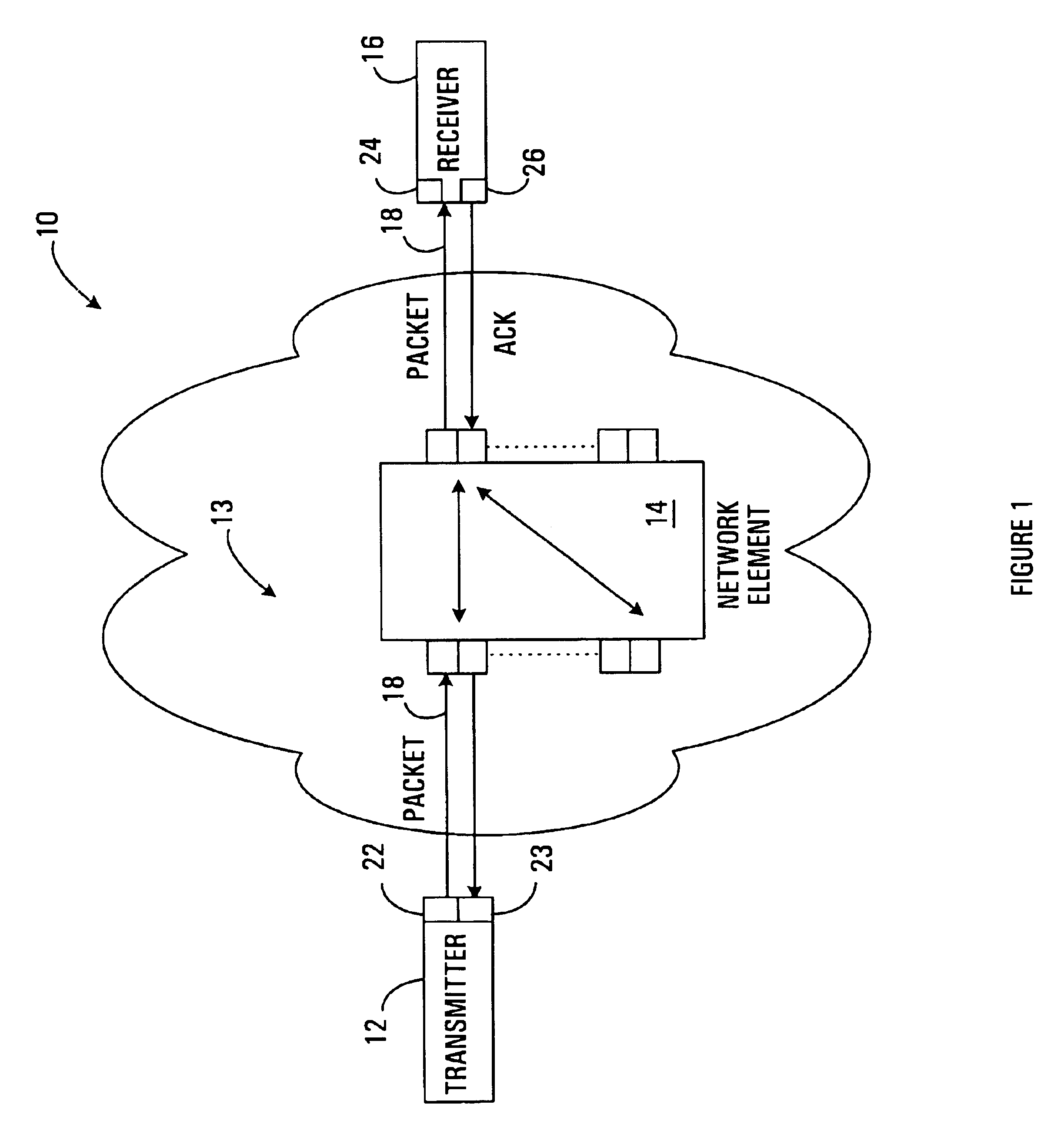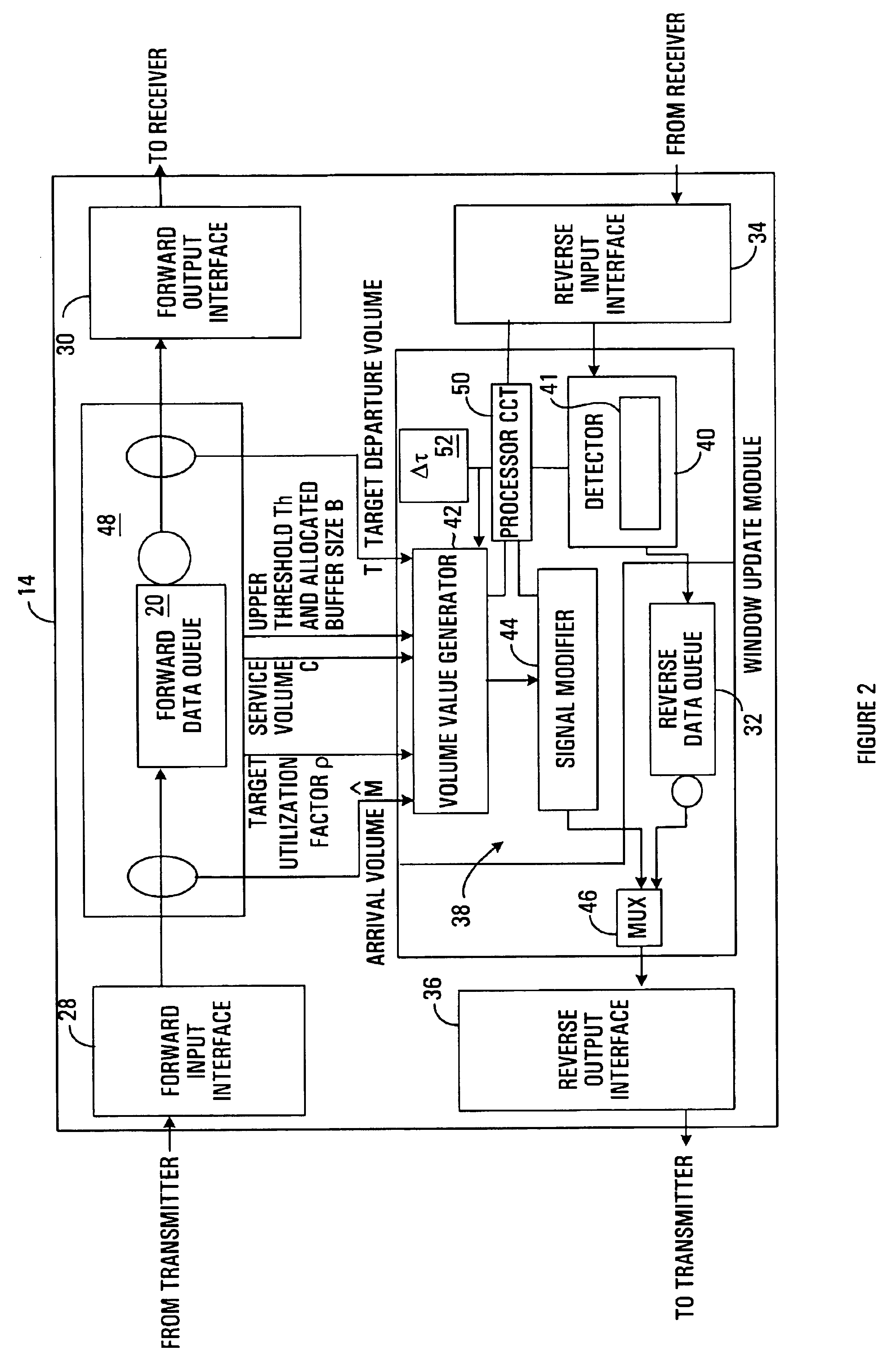Method and apparatus for adjusting packet transmission volume from a source
a packet transmission and source technology, applied in the field of methods, can solve the problems of queues in the network that might have overflown, cannot be directly detected by tcp, and cannot know when the network is congested, and achieve the effect of increasing utilization
- Summary
- Abstract
- Description
- Claims
- Application Information
AI Technical Summary
Benefits of technology
Problems solved by technology
Method used
Image
Examples
Embodiment Construction
[0027]As shown generally at 10 in FIG. 1, a network according to a first embodiment of the invention includes a first data transmitter 12, a network element 14 and a first data receiver 16. In general, the transmitter 12 transmits data in a forward direction to the network element 14 which, in turn, transmits the data to the receiver 16. It will be appreciated that there may be a plurality of network elements between a plurality of transmitters and a plurality of receivers, however, for simplicity only one of each is shown.
[0028]In this embodiment, the data transmitted by the transmitter 12 is transmitted as “forward” packets 18 which are communicated in a forward direction i.e. from the transmitter to the receiver 16. In this specification, the term “packet” is applied broadly, and contemplates any quantum of data, such as a block, a frame, a datagram, a cell, a word, a byte, or a bit, for example. In general, a transmitter 12-receiver 16 pair that exchanges packets via one or more...
PUM
 Login to View More
Login to View More Abstract
Description
Claims
Application Information
 Login to View More
Login to View More - R&D
- Intellectual Property
- Life Sciences
- Materials
- Tech Scout
- Unparalleled Data Quality
- Higher Quality Content
- 60% Fewer Hallucinations
Browse by: Latest US Patents, China's latest patents, Technical Efficacy Thesaurus, Application Domain, Technology Topic, Popular Technical Reports.
© 2025 PatSnap. All rights reserved.Legal|Privacy policy|Modern Slavery Act Transparency Statement|Sitemap|About US| Contact US: help@patsnap.com



